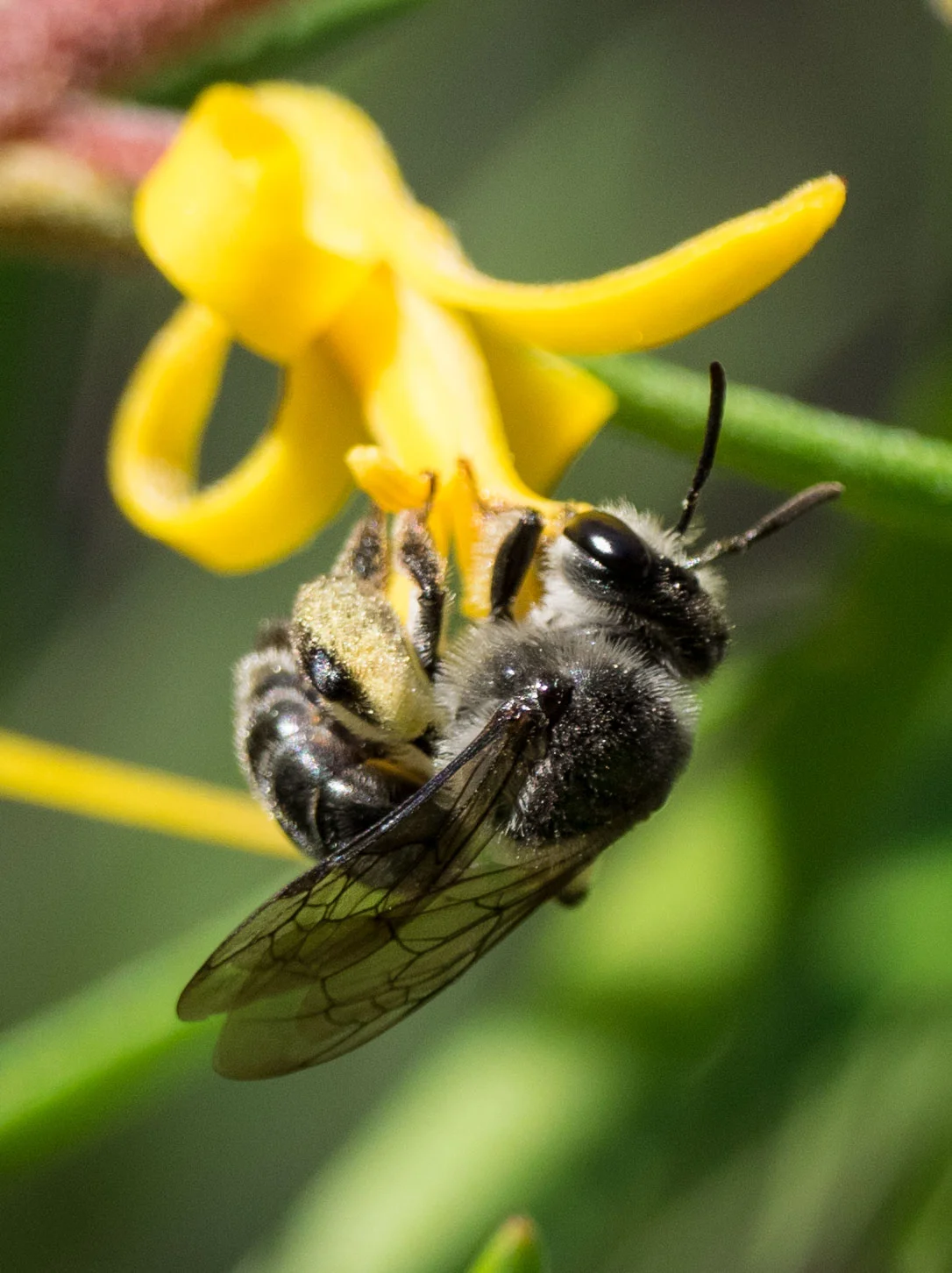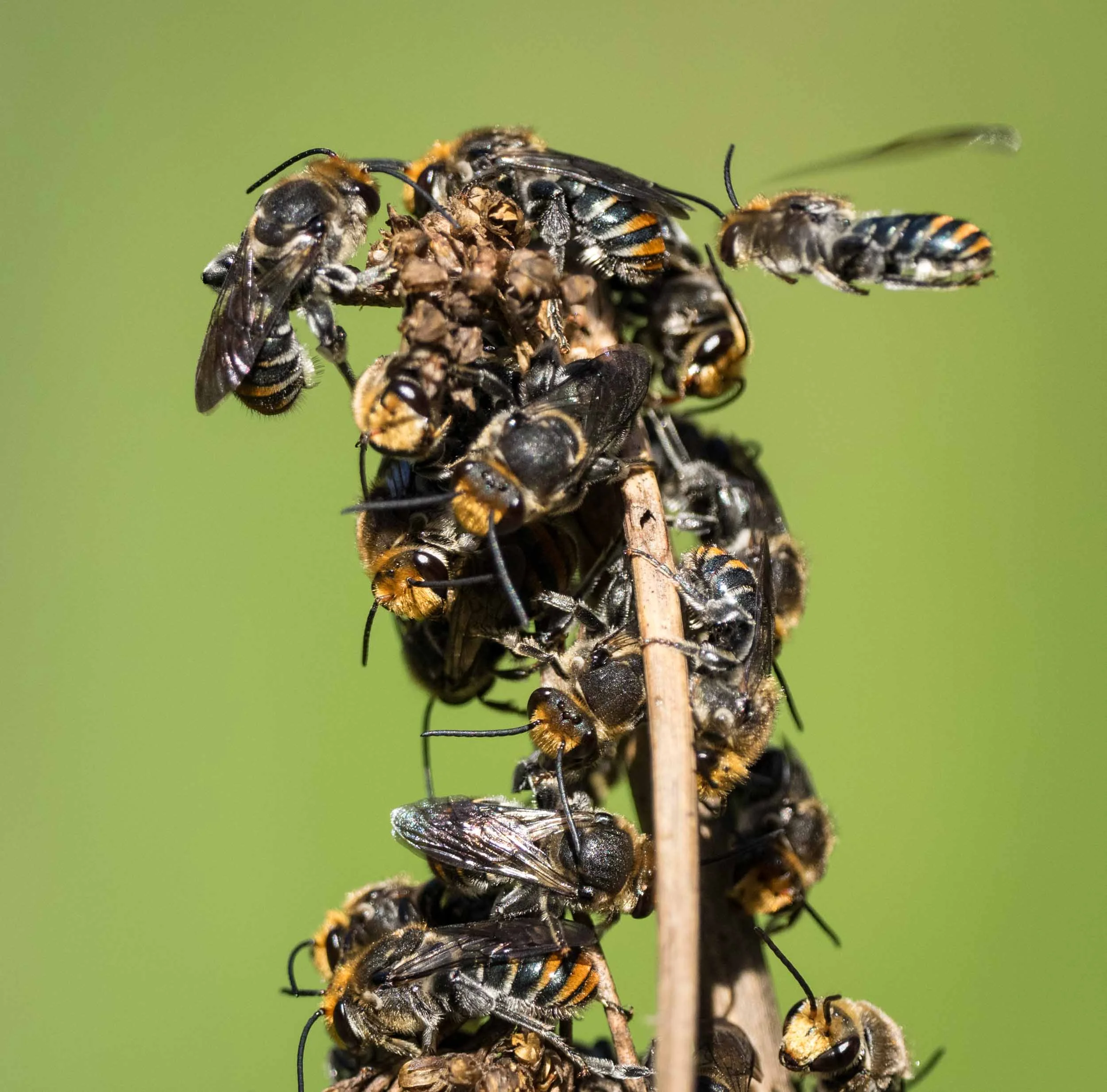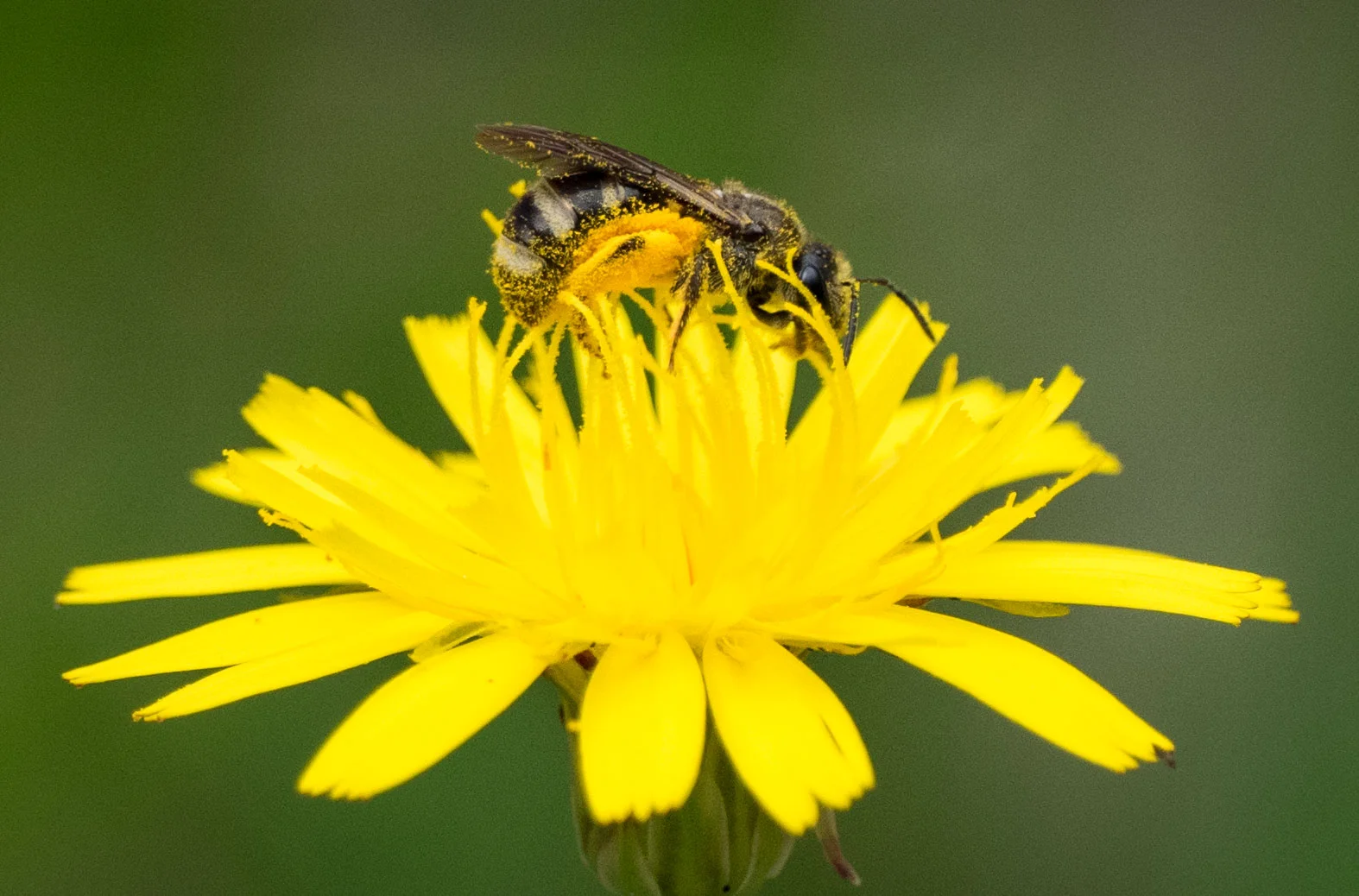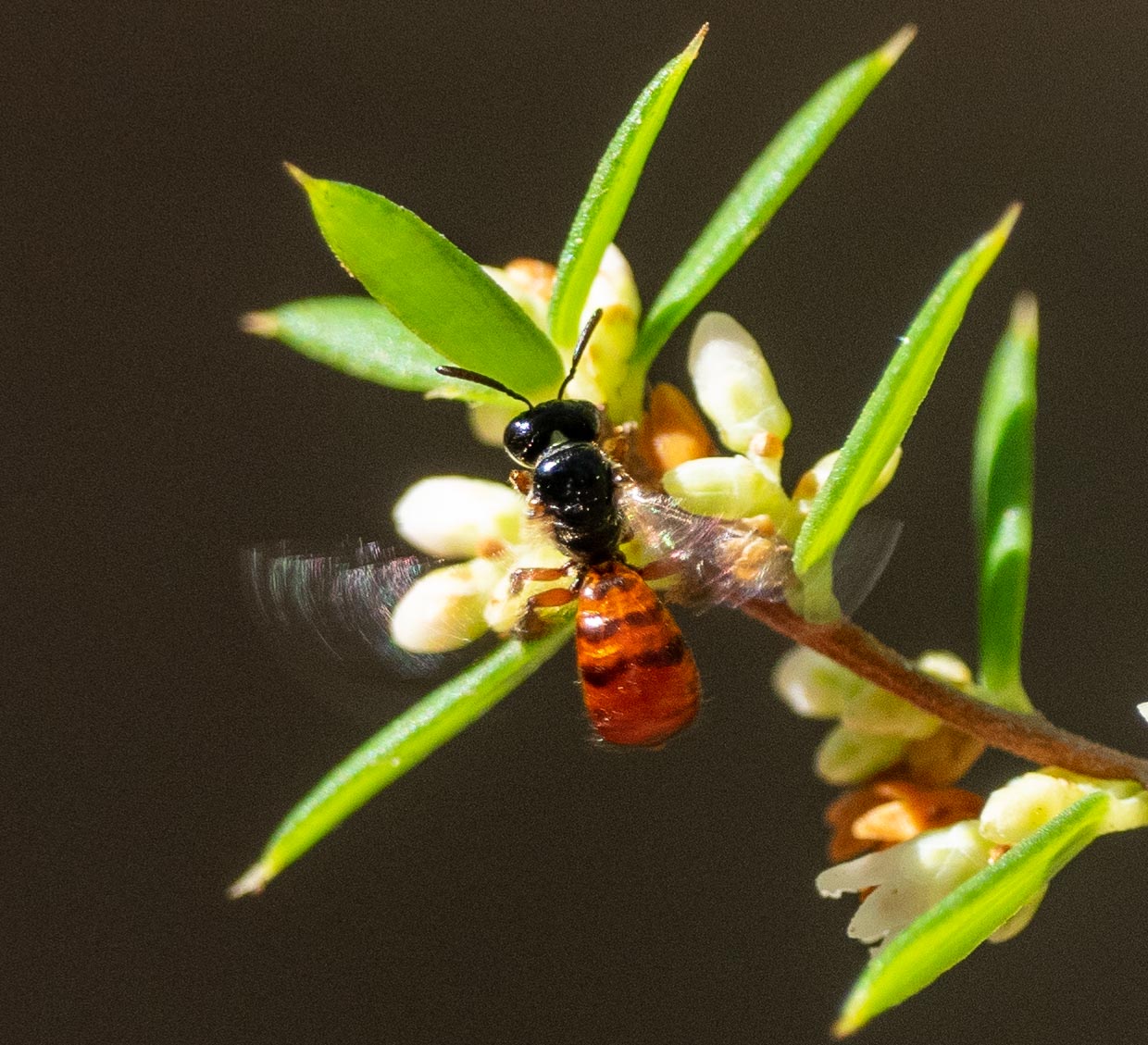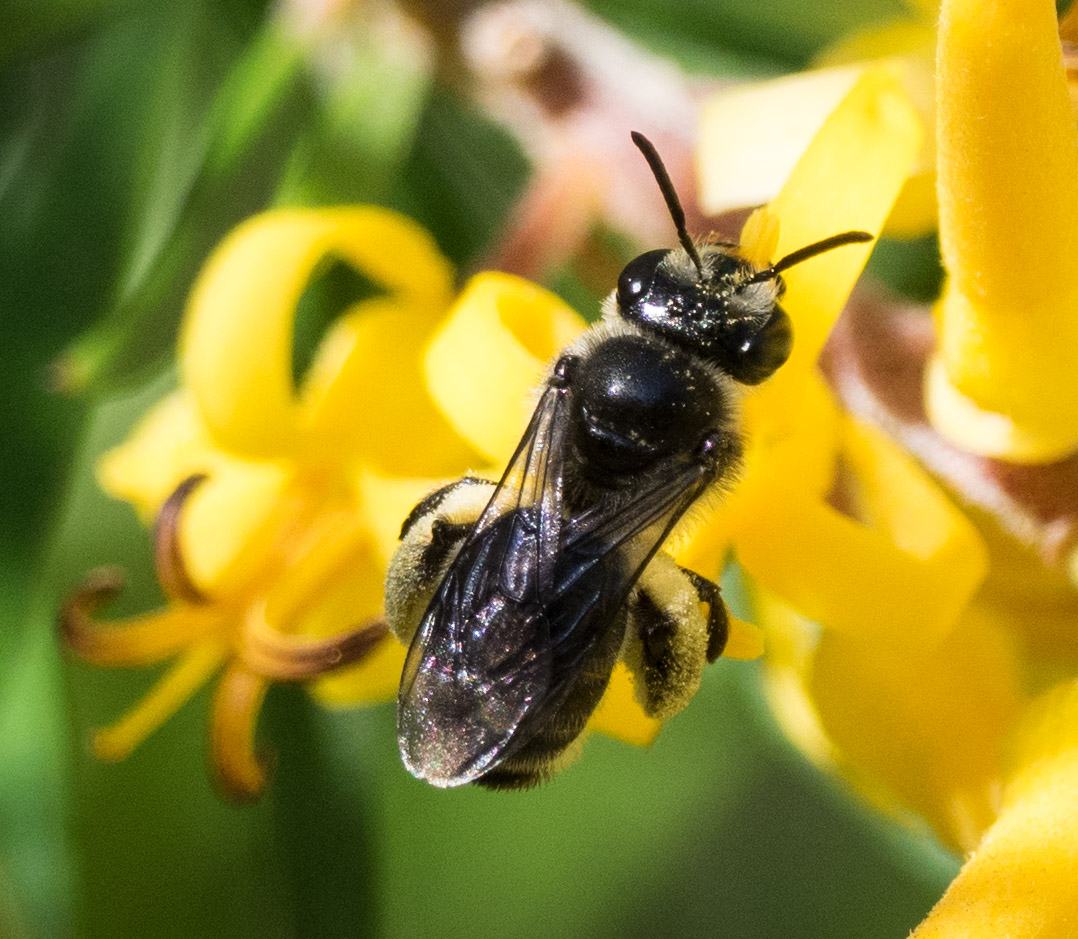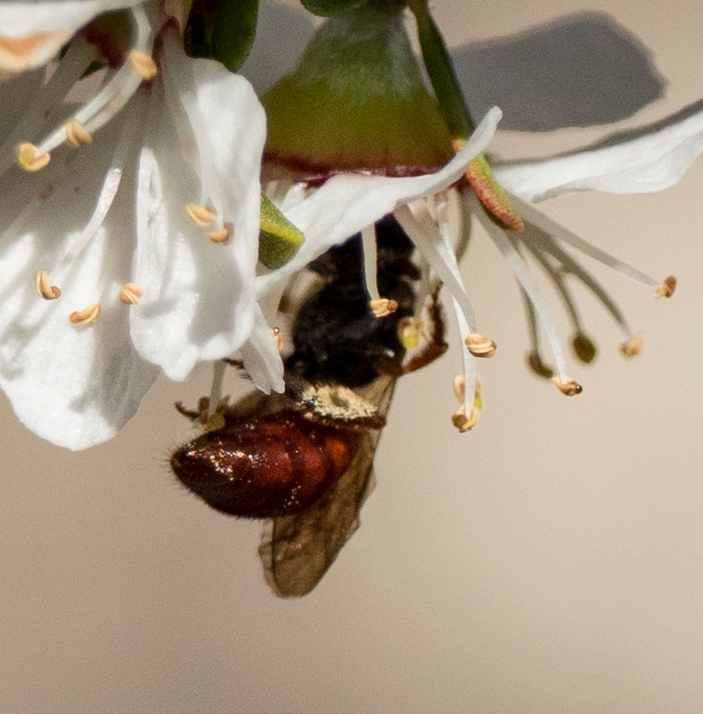More (about) bees
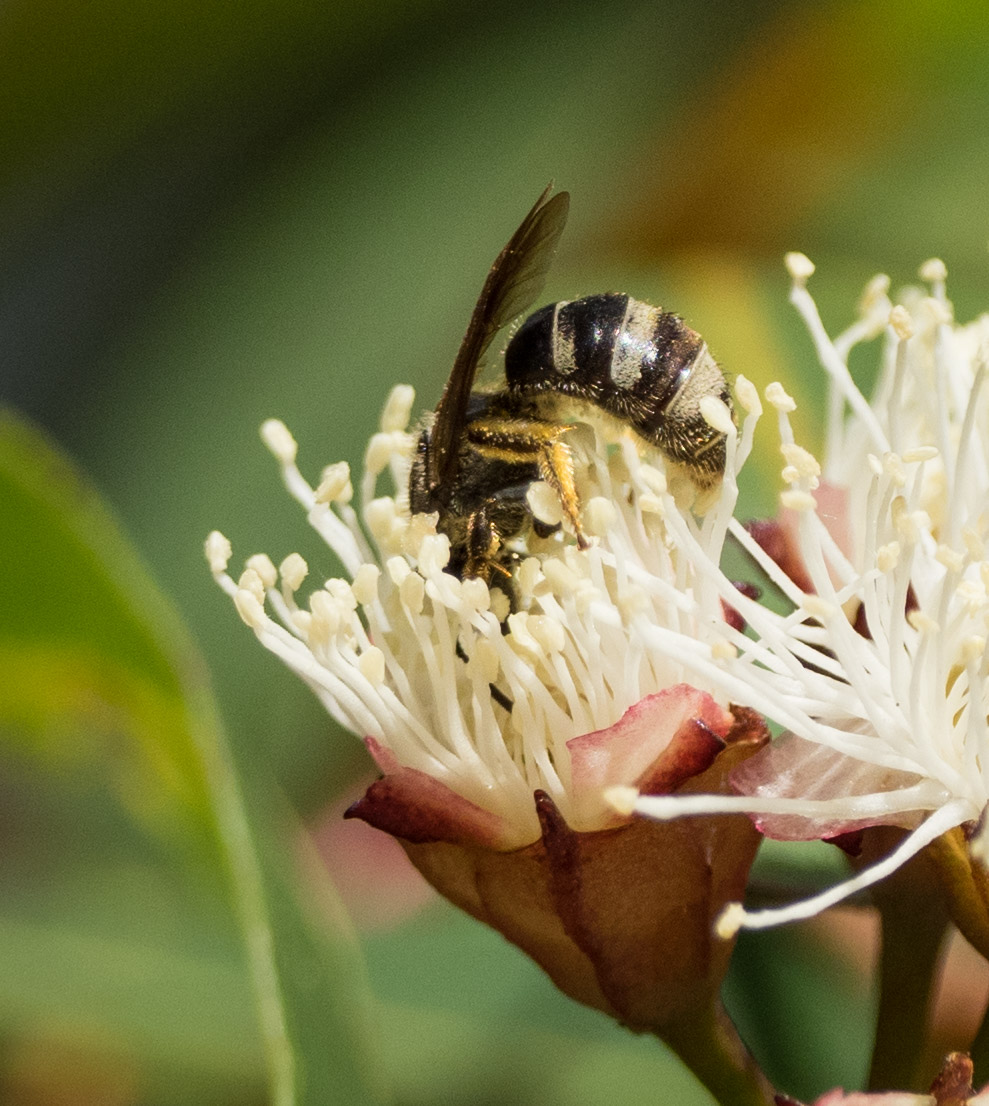
My quest to understand more about our local bee fauna continues. And, in terms of identification, I'm getting a little better, slowly. But my appreciation of their diversity is growing apace.
This is yet another case of: the more you look, the more you see; the more you see, the more you learn; and the more you learn, the better you become at looking.
So here is a brief update on what I've been seeing and learning, and where I intend to look next.
The obvious place to look for bees is at flowers. And that was quite simple during Spring and early Summer. Leptospermum and Kunzea ('tea trees'), and Leucopogon are all absolute magnets for bees, and for plenty of other insects too.
Diversity within a family
Colletidae is the largest of Australia's five families of bees, containing more than half of the 1700 named species. I've recognised a few species now, and no doubt will keep adding to our home list as I get better at looking.
Euhesma sp. (Family: Colletidae; sub-family: Euryglossinae)
I've seen this shiny bee with the wasp-like spots only occasionally, and have been able to identify it as Euhesma sp. This is one of the species that transports pollen by swallowing it, rather than carrying it on its legs or body.
Leioproctus (Cladocerapis) sp. (Family: Colletidae; sub-family: Leioproctus)
If you've been following my recent posts, you may recognise this lovely girl feeding on Persoonia flowers.
Medium-sized bee ... hairy ... dark abdomen ... pollen-laden hind legs ...
Well, when I looked back to images of an 'unknown' bee feeding on Leucopogon in September, I find it's a very close relative.
But in this case, red abdomen, not black. And smaller too, I think.
Leioproctus (Leioproctus) sp. (Family: Colletidae; sub-family: Leioproctus)
But where is the pollen? At first, I thought that perhaps she had yet to start collecting. But having read a little more, I now think that this is a male. Note the very long antennae. And males don't collect pollen, even though they do eat it.
Same genus, different sub-genus. Turns out there are a LOT of different Leioproctus in Australia ... about 200 species, across 29 sub-genera!!
Now, speaking of male bees ...
The males of many 'solitary' bee species choose to roost together at night. Clusters like the one below are quite a common sight.
Lipotriches (Austronomia) australica (Family: Halictidae; sub-family: Nomiinae)
This particular Juncus seed head has been their regular roost for weeks now. Each morning they become progressively more active and restless, and the group dwindles ... by the middle of the day, there are usually no bees left. No doubt they are feeding and seeking females to mate. Then they gradually return, shuffle about as if seeking the best position, and settle in for the night.
Lipotriches (Austronomia) australica
Lipotriches (Austronomia) australica
So are these social or solitary bees?
Lipototriches are solitary bees, as are virtually all of Australia's native bees. That is, they do not form large, complex colonies (with a Queen, workers, drones, etc) as Honey Bees do. Instead, each female will mate, make a 'nest', make 'bee bread' from pollen, and then lay an egg on the bread.
Yet this is only part of the story when it comes to our solitary bees. Take Lipotriches as an example. The females nest in burrows dug into the soil. The females often choose to build their burrows in very close proximity to one another, and there are even reports of some nest burrows being used by two mothers.
Solitary, but not necessarily all alone, it seems.
'Seeing' native bees
Native bees have gained considerable fame in Australia of late.
This is in part due to concerns over the health of Honey Bees. Viruses, and the mites that spread them, have become a major concern among honey producers and other farmers who rely on Honey Bees as pollinators.
The potential of native bees as supplementary pollinators of crops is a hot topic in agri-circles.
Apis mellifera (European Honey Bee) (Family: Apidae)
Across the wider community there is a move toward deliberately attracting native bees to urban environments, whether by appropriate garden plantings, the provision of 'bee hotels', or both.
Yet despite this growing interest in our bee fauna, most people have actually seen very few native bees species.
Of course, 'Blue-banded Bees' are quite famous. These large, distinctive bees (Amegilla sp.) are a common sight in gardens, flying slowly and buzzing loudly. And many people have heard of 'sugar bag bees' and 'stingless bees' (Tetragonula and Austroplebia, both in the family Apidae) - the few species of native bees that are truly social and store honey.
But what about all the other species?
Well, I think at least part of the answer to this mystery is size. Many species are really, really small.
How small?
Lately I've taken to looking at weeds to find bees. There are few other flowers available to me right now. The Angophora are flowering, but the trees here are tall and most of the blossom is way beyond my reach. But the yellow daisies (Hypochaeris radicata - 'flatweed') are flowering in abundance.
To get a sense of size, compare each of the native bees in the images below to this Honey Bee. They are all feeding on the same type of flowers, which have an overall diameter of 15-20mm.
Apis mellifera (European Honey Bee) (Family: Apidae)
Bee 1 = small (possibly Lassioglossum sp. - Family: Halictidae)
Bee 1 = small (possibly Lassioglossum sp. - Family: Halictidae)
Bee 2 = smaller (possibly Lassioglossum sp. - Family: Halictidae)
Bee 2 = smaller (possibly Lassioglossum sp. - Family: Halictidae)
And then, while stalking a Blue-banded Bee that I (briefly) caught sight of near these lilies, I noticed these tiny bees!
Bee 3 = smaller still (identity unclear at this stage)
In this case, the flowers are 20mm overall diameter, the stamens (white threads) 8mm, and the anthers (yellow, with pollen) just 1-2mm long!
Bee 4 (also, Identity unclear at this stage)
And finally, the smallest bee I've yet seen. Remember that the anthers are no more than 2mm long.
Bee 5 = finally, the smallest bee of all
Bee 5 = finally, the smallest bee of all
Finding native bees on flowers is not so difficult after all. You just need to look - closely. My next challenge is to find where they nest. I'm keeping an eye on likely plant stems, such as Xanthorrhea (grass tree) spikes, as various species build nest cells in hollow stems. But mostly I'm looking for burrowing bees. Apparently more than half Australia's native bees nest in burrows.
So this afternoon I was very excited when I saw small insects using a couple of likely-looking sand mounds. I've read that Leioproctus build long tunnels in sandy soil, and that the entrance looks like a small volcano. I thought I'd found them!
Then I saw the yellow face and thought ... "oh, wow! Not Leioproctus ... Masked Bees!!"
But with a closer look ... they're not bees at all. They're digger wasps.
A digger wasp, cautiously emerging from her nesting burrow. Cerceris sp.
Still exciting, as I'd never before seen this type of wasp. No doubt they'll be the subject of a future post.
In the meantime, I'll just keep looking for bees and their nests, and keep learning along the way.



